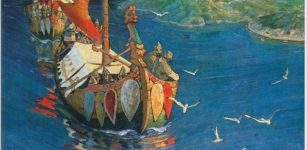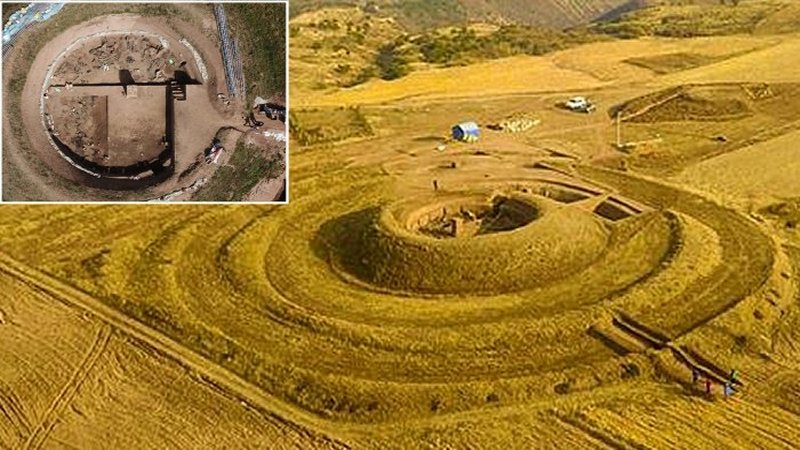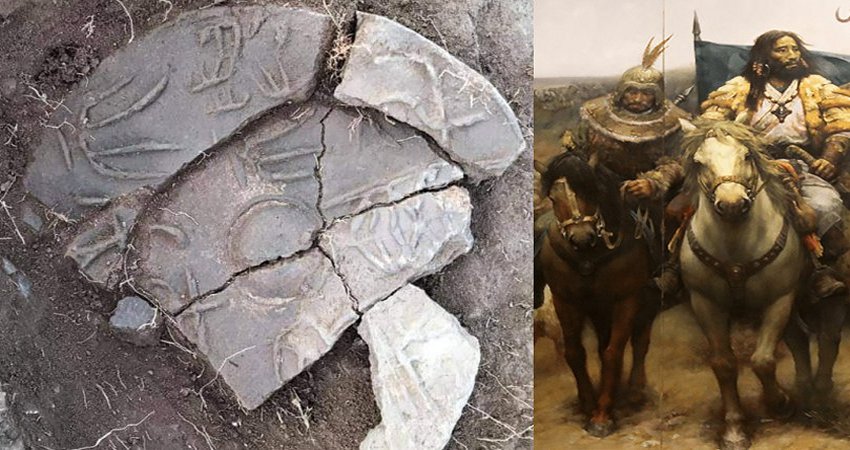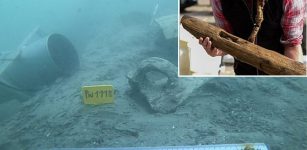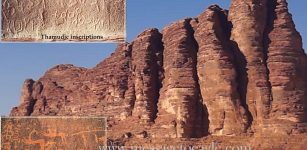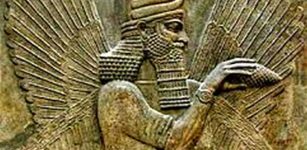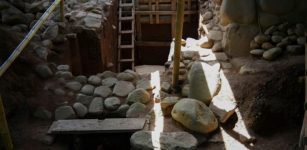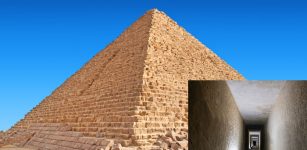Ancient Coffin Of Priest Psamtik, Son Of Osiris And Five Replicas Of Goddess Maat Sent On Upcoming Expo
Jan Bartek – MessageToEagle.com – In a recent announcement Egypt’s Ministry of Tourism and Antiquities told the press several magnificent ancient Egyptian artifacts will be sent on an upcoming display.
At the Expo Dubai 2020, an event that starts on 1 October 2021 and will continue till 31 March 2022 visitors will be able to admire an original ancient Egyptian coffin and fives replicas of ancient Egyptian antiquities in addition to promotional videos of tourist destinations in Egypt.
Credit: Ahram Online
The coffin found at the Bubastian Necropolis in Saqqara belongs to a priest, Psamtik son of Osiris.
In ancient Egypt, where religion was an important part of daily life, everything focused on pleasing the gods.
Egyptian priests devoted their lives to the gods and goddesses and some official gods like Horus, Bastet and Amun were worshiped by the pharaoh and priests in large temples.
Many priests also served Osiris who was one of the most important deities in ancient Egypt. Osiris was a god of death, resurrection, and fertility. His origin and the meaning of his name remain enigmatic. Also, the direct association of Osiris with agriculture and fertility is believed to have occurred later.
The coffin that will be displayed at the Expo Dubai is one of a collection of coffins probably belonging to priests of the goddess Bastet and their families.
In ancient Egyptian mythology, Bastet (or Bast) was a feline goddess and one of the most loved goddesses in Egyptian history. She personified feminine beauty, grace, kindness, fun, and offenders of gods.
She had many temples and shrines to her name. She was especially revered in Bubastis (Tell Basta) in the eastern Delta, but she was also worshiped highly in Memphis, Heliopolis, and Herakliopolis.
“This anthropoid coffin (meaning it resembles a human body) is made from painted wood and decorated with a large floral wesekh collar ending with two falcon heads. Beneath this, the sky goddess Nut spreads her wings and holds two Maat (truth and justice) feathers. The middle part is decorated with inscriptions of offering texts and speeches of gods edged by two rows of gods holding was sceptres in their hands. At the bottom, two figures of the god Anubis on his shrine face the deceased. The coffin is still sealed and has not yet been opened,” the Ahram Online reports.
As reported by Ahram Online, the five Egyptian replicas visitors will be able to admire are
Maat
Maat is the deity related to truth, justice, balance and rightness; The goddess Maat is recognized by an ostrich feather worn on her head. The uraeus snake above her forehead is a symbol of gods and kings and represents a protective cobra goddess spitting fire at her enemies. Maat was the daughter of the sun god Re, and wife of Thoth the god of knowledge, wisdom, writing, science, and art.
Golden Burial Mask of King Tutankhamun
King Tutankhamun’s burial mask made of solid gold and precious stones is one of the most famous and the most valuable objects in the world. Instantly recognizable, the perfect face of the young king is an icon of Ancient and Modern Egypt.
The mask was found inside the Burial Chamber of King Tutankhamun’s tomb, placed over the head and shoulders of the dead king’s mummified remains that were safe inside his coffins, sarcophagus and shrines.
He is made to look like the god Osiris, ruler of the underworld, and the sun god Re whose body was made of gold and hair of lapis lazuli. At the same time, we see a perfect version of Tutankhamun’s face, recognizable from his coffins, statues and temple reliefs.
Golden Throne of King Tutankhamun
This beautifully decorated armchair was found wrapped in linen in the Antechamber of Tutankhamun’s tomb. Stools were used by almost everyone, but only the very rich had chairs.
Credit: Ahram Online
The throne is made of wood covered with sheets of gold and silver and inlaid with glass, faience, and precious stones. The chair’s arms are formed from winged uraeus snakes holding the king’s royal name.
The scene on the backrest shows King Tutankhamun and his wife Queen Ankhesenamun relaxing under a floral canopy. Their skin is cast in red glass, while their pleated clothing is shaped out of silver and gold foil.
Guardian Statues of King Tutankhamun
Two black and gold life-sized portrait statues of King Tutankhamun were found standing face to face in front of the sealed entrance to the Burial Chamber inside his tomb.
Both statues hold a staff in their left hand and a mace in their right. They are similar but not identical, as one is wearing a khat headdress, while the other is in a nemes headcloth with two long pieces hanging down either side of its neck.
Three Royal Coffins of Tutankhamun
Inside the stone sarcophagus of King Tutankhamun, there were three golden coffins nested inside each other.
See also: More Archaeology News
Each one is anthropoid shaped showing the king as a mummified figure with crossed hands. The outer coffin is wood covered in sheet gold, the middle coffin is wood covered with colored glass and precious stones and the inner coffin is made from solid gold. The lids and boxes of each one were secured together with gold and silver nails, and on every coffin winged goddesses in human and bird forms wrap their arms protectively around the king.”
Hopefully, the Expo will attract the attention of the outside world and raise interest in the enigmatic and fascinating history of ancient Egypt.
Written by Jan Bartek – AncientPages.com Staff Writer



